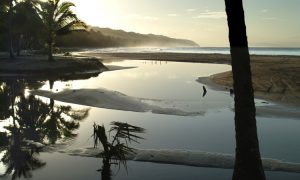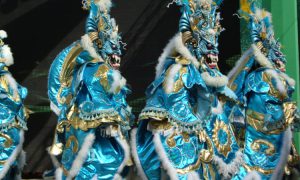The country …
Hispaniola is after Cuba the second largest island of the Caribbean. It hosts two countries, the Dominican Republic and Haiti. The Dominican Republic covers two third of the island.
 The subtropical climate averaging a tem-perature of 82°F (28°C) offers summer and sun all year round. No wonder that tourism is the major economic factor of the country. Mainly all-inclusive tourists spent their holi-days in the Dominican Republic. In recent years although, due to the efforts of the Ministry of Tourism to support alternative and modern concepts of tourism, more and more individual travelers discover the country on their own.
The subtropical climate averaging a tem-perature of 82°F (28°C) offers summer and sun all year round. No wonder that tourism is the major economic factor of the country. Mainly all-inclusive tourists spent their holi-days in the Dominican Republic. In recent years although, due to the efforts of the Ministry of Tourism to support alternative and modern concepts of tourism, more and more individual travelers discover the country on their own.
The original inhabitants were the Taino Indians, a peaceful tribe of whose culture only few relicts are left. In 1492 Christopher Columbus discovered the island. It is here where he founded the first European settlement in the New World and from here where he started the colonization of America. The country’s capital Santo Domingo dazzles visitors with plenty of colonial architecture: the oldest cathedral, the oldest university and the oldest court in the New World.
Other important dates of the country’s history are: 1822 the occupation by Haiti,
1844 the proclamation of independence by Juan Pablo Duarte which gave birth to the modern Dominican Republic, and 1930 till 1961 the dictatorship of General Rafael Trujillo.
Today the Dominican Republic is a demo-cratically governed state in the form of a presidential democracy with 9.1 million inhabitants, 73% of them mulattos, 16% white and 11% black.
 … and its people
… and its people
The hospitality of the Dominicans is proverbial. Close family ties and good neighborhood relations are very important to them.
That is why Dominicans always seem to be on the road: You will meet them in the street chatting with the neighbor, enjoying a cafecito in the small colmado next door, laughing with their families and friends in the back of their trucks when going to the beach on Sundays, or heavily gesticulating while playing Domino in the little village pub.